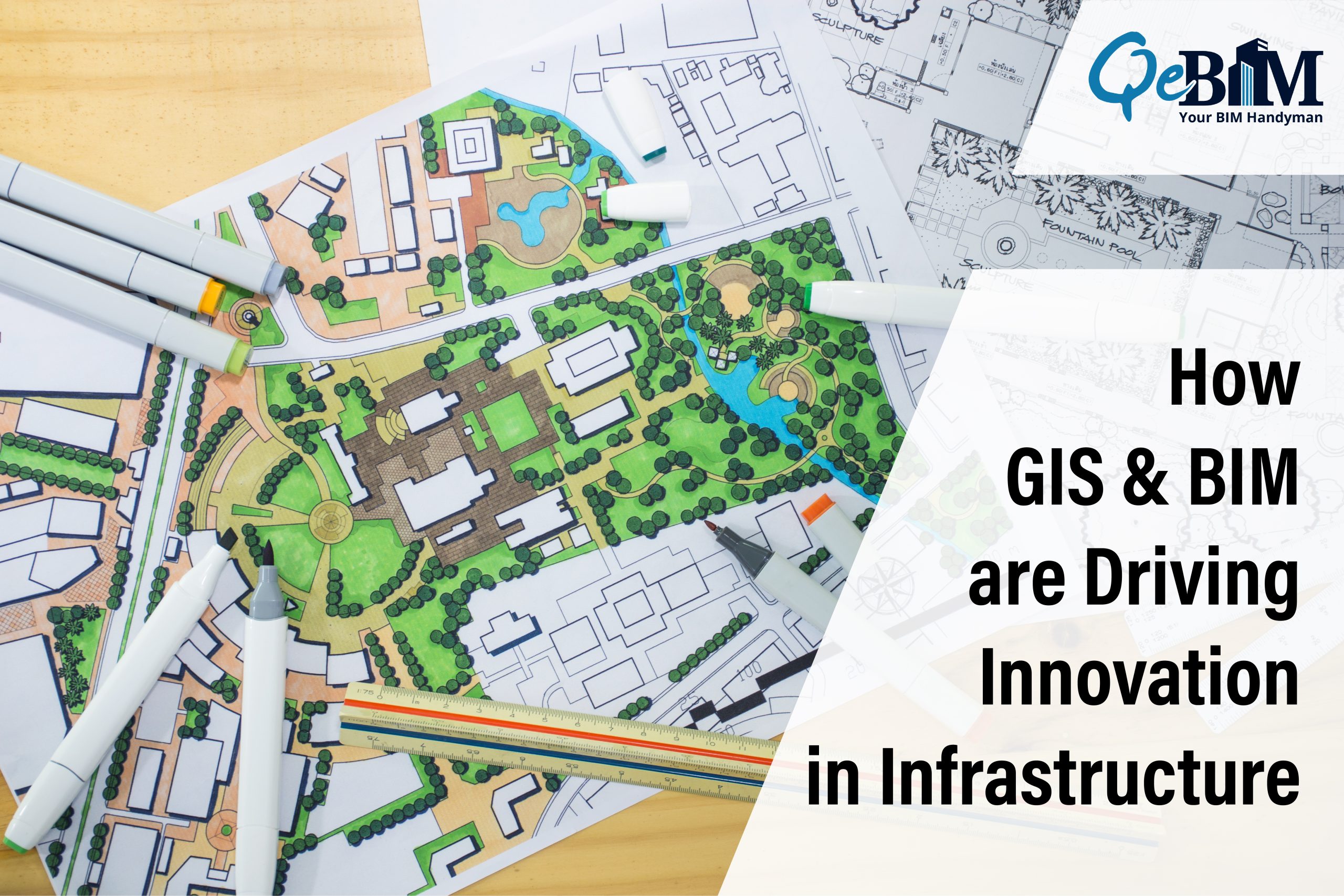How GIS and BIM are Revolutionizing Infrastructure Development

Introduction
The planning, designing, and building of infrastructure projects have been transformed by advances in technology and procedures within modern times, which are continuously shifting and developing the infrastructure development sector. Building Information Modeling (BIM), as well as Geographic Information Systems (GIS), represent two of the latest and most important developments in this field. We will be taking a look at the ways GIS, as well as BIM, have transformed the construction of infrastructure along with altering the landscape of the sector in this blog.
What is the concept of BIM in the context of infrastructure?
Creating computerized three-dimensional representations of structures along with additional constructions has been a frequent task for the digital instrument known as Building Information Modeling (BIM) within the construction sector. BIM nevertheless has recently become prevalent in construction endeavors like roadways, bridges, as well as pipelines.
Project managers can build a complete digital representation of the complete project, ranging from the initial planning phase to building and maintenance using BIM for the infrastructure. A variety of information, which includes plans for design, budget projections, building timetables, as well as material requirements, might be included in this digital system.
BIM’s Advantages for Infrastructure
There are numerous advantages to using BIM for infrastructure tasks. Among those that are most significant factors can be found below:
- Improved Collaboration:
Collaboration has been enhanced because BIM gives project teams access to a singular, common repository of data, which makes teamwork easier. This enables enhanced communication and collaboration among every participant involved, coming from planners to independent contractors who may collaborate on the identical digital representation while providing real-time modifications. - Improved decision-making:
Teams of designers can spot probable problems before they occur in the process of design thanks to their capacity to represent the work in 3D. Because of this, decision-making by the project team becomes more effective, and expensive blunders during building are avoided. - Enhanced efficiency:
Project participants are able to find sections in which building procedures could be simplified and made more effective through the development of a digital representation of the construction endeavor. The duration of projects could be shortened as a consequence, and the associated expenses may be decreased while total efficiency has been increased.
What is the concept of GIS in the context of infrastructure?
The additional instrument which is altering the infrastructure development sector has been Geographic Information Systems (GIS). Teams working on projects can collect, process, and show geographical information, that includes topography, waterways, as well as assets related to infrastructure, using GIS.
GIS’s Advantages for Infrastructure
The use of GIS in infrastructure development initiatives offers numerous advantages. A few of those that are most important benefits have been outlined below:
- Better planning:
By employing GIS to evaluate geographical information, the team working on the project may arrive at decisions with greater certainty regarding project places, directions, as well as patterns. It may result in less expensive projects and more efficient planning for infrastructure. - Improved asset administration:
Project participants can keep apprised of the position and state of infrastructure pieces like road and bridge construction thanks to GIS. By using such data to plan upkeep, fixes, and maintenance, the administration of assets will be enhanced as well as expenses will be brought down. - Greater security:
GIS could be utilized to investigate traffic trends and spot possible security risks, like crossroads having an elevated incidence of crashes. Using this knowledge, safer infrastructure ought to be designed, lowering the danger of accidents.
Digital Construction Organizations
Digital Construction Firms have become more prevalent as a result of the use of Building Information Modeling and Geographic Information Systems in the development of infrastructure. These businesses employ technological advances in order to boost both the efficacy as well as productivity of infrastructure initiatives at every stage, including preparing, construction, and management.
A variety of offerings are provided by digital building firms, such as:
- Digital Layout as well as Modeling:
These businesses employ BIM to build 3D models for infrastructure initiatives, facilitating improved decision-making and collaboration between teams working on a project. - Geospatial Analysis:
GIS has been employed by digital construction firms to conduct geospatial analyses that help with the preparation of infrastructure, layout, and upkeep. - Construction Project Administration:
From organizing to assurance of quality, digital construction firms employ technological advances.
Additionally, digital construction companies can offer more precise estimates for costs and timetables. The implementation of BIM enables a more thorough grasp of the construction endeavor, which may result in more precise timetables and budgets. This lessens the possibility of disruptions and expense overruns.
Conclusion
The industry has gone through a change as a result of the use of BIM as well as GIS in infrastructure development, which is altering how these construction endeavors are initially thought of, developed, and built. The advantages of such technological advances include improved decision-making and enhanced cooperation, and enhanced efficiency. The building industry has undergone shifts as a result of the widespread implementation of GIS and BIM for infrastructure development.
These technological advancements enable more effective resource management, enhanced teamwork, and precise cost and timetable estimations. Additionally, they allow for the early detection of possible issues by engineers, resulting in safer and longer-lasting structures. The implementation of GIS and BIM is likely to increase even further as consumer appetite for infrastructure rises, resulting in more effective and environmentally friendly construction methods.